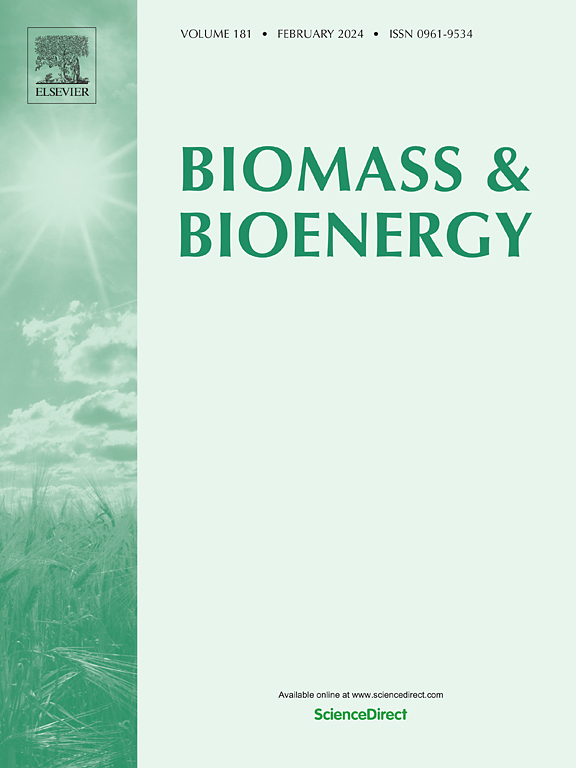Development of starch-based composite electrodes for sustainable energy applications in bio-electrochemical systems
IF 5.8
2区 生物学
Q1 AGRICULTURAL ENGINEERING
引用次数: 0
Abstract
The development of starch-based composite electrodes for sustainable energy applications in bio-electrochemical systems (BES) has attracted considerable interest due to their biodegradability, low cost, and environmental compatibility. Starch, a renewable biopolymer, is widely explored as a base material for electrodes in microbial fuel cells (MFCs) and microbial electrolysis cells (MECs). However, its inherently poor electrical conductivity limits its direct application. To address this, starch is combined with conductive fillers such as carbon nanotubes (CNTs), graphene oxide (GO), and conductive polymers like polyaniline (PANI), which significantly enhance the electrochemical properties and mechanical stability of the electrodes. These starch-based composites demonstrate improved power density, specific capacitance, and durability, making them promising candidates for sustainable energy generation and wastewater treatment. This review uniquely consolidates recent advancements in the design, fabrication, and performance optimization of starch-based composite electrodes in BES. By critically analyzing the synergistic interactions between starch and conductive materials, it highlights innovative approaches to overcome conductivity and stability challenges. This comprehensive assessment offers new insights and a novel framework for future research aimed at eco-friendly, and cost-effective electrode materials, positioning starch composites as a sustainable alternative in the evolving field of bio-electrochemical energy technologies.

淀粉基复合电极在生物电化学系统中可持续能源应用的研究进展
由于淀粉基复合电极具有生物可降解性、低成本和环境相容性,其在生物电化学系统(BES)中可持续能源应用的发展引起了人们的广泛关注。淀粉是一种可再生的生物聚合物,作为微生物燃料电池(mfc)和微生物电解电池(MECs)电极的基础材料被广泛研究。然而,其固有的导电性差限制了其直接应用。为了解决这个问题,淀粉与导电填料如碳纳米管(CNTs)、氧化石墨烯(GO)和导电聚合物如聚苯胺(PANI)结合在一起,显著提高了电极的电化学性能和机械稳定性。这些淀粉基复合材料具有更好的功率密度、比电容和耐用性,使其成为可持续能源生产和废水处理的有希望的候选材料。这篇综述独特地整合了最近在设计、制造和性能优化淀粉基复合电极在BES的进展。通过批判性地分析淀粉和导电材料之间的协同作用,它强调了克服导电性和稳定性挑战的创新方法。这一综合评估为未来研究生态友好、经济高效的电极材料提供了新的见解和新框架,将淀粉复合材料定位为不断发展的生物电化学能源技术领域的可持续替代品。
本文章由计算机程序翻译,如有差异,请以英文原文为准。
求助全文
约1分钟内获得全文
求助全文
来源期刊

Biomass & Bioenergy
工程技术-能源与燃料
CiteScore
11.50
自引率
3.30%
发文量
258
审稿时长
60 days
期刊介绍:
Biomass & Bioenergy is an international journal publishing original research papers and short communications, review articles and case studies on biological resources, chemical and biological processes, and biomass products for new renewable sources of energy and materials.
The scope of the journal extends to the environmental, management and economic aspects of biomass and bioenergy.
Key areas covered by the journal:
• Biomass: sources, energy crop production processes, genetic improvements, composition. Please note that research on these biomass subjects must be linked directly to bioenergy generation.
• Biological Residues: residues/rests from agricultural production, forestry and plantations (palm, sugar etc), processing industries, and municipal sources (MSW). Papers on the use of biomass residues through innovative processes/technological novelty and/or consideration of feedstock/system sustainability (or unsustainability) are welcomed. However waste treatment processes and pollution control or mitigation which are only tangentially related to bioenergy are not in the scope of the journal, as they are more suited to publications in the environmental arena. Papers that describe conventional waste streams (ie well described in existing literature) that do not empirically address ''new'' added value from the process are not suitable for submission to the journal.
• Bioenergy Processes: fermentations, thermochemical conversions, liquid and gaseous fuels, and petrochemical substitutes
• Bioenergy Utilization: direct combustion, gasification, electricity production, chemical processes, and by-product remediation
• Biomass and the Environment: carbon cycle, the net energy efficiency of bioenergy systems, assessment of sustainability, and biodiversity issues.
 求助内容:
求助内容: 应助结果提醒方式:
应助结果提醒方式:


